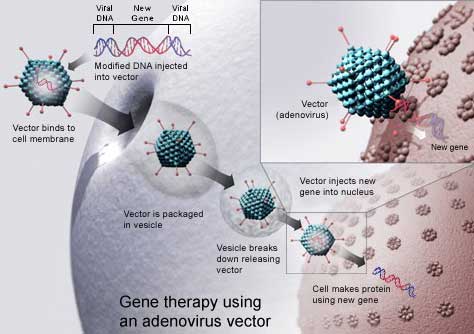Viral Vectors for Gene Delivery: Biotechnology Applications and Benefits
What are Viral Vectors?
Viral vectors are engineered viruses that are used to deliver genetic material into cells for various applications, such as gene therapy, vaccine development, and biotechnology research. These viruses are modified to remove their ability to cause disease while retaining their capability to enter cells and deliver the desired genetic payload.

Types of Viral Vectors
Several types of viruses are commonly used as viral vectors, each with its own advantages and limitations:
Adenoviral Vectors
Adenoviruses are non-enveloped, double-stranded DNA viruses. They can infect both dividing and non-dividing cells and provide high levels of gene expression. However, adenoviral vectors can trigger strong immune responses, limiting their long-term efficacy.
Adeno-Associated Viral (AAV) Vectors
AAVs are small, single-stranded DNA viruses that are non-pathogenic in humans. They can infect both dividing and non-dividing cells and provide long-term gene expression. AAV vectors have a low immunogenicity profile, making them attractive for gene therapy applications.
Lentiviral Vectors
Lentiviruses are a subclass of retroviruses that can integrate their genetic material into the host cell's genome. They can infect both dividing and non-dividing cells and provide stable, long-term gene expression. Lentiviral vectors, derived from HIV-1, are widely used in research and clinical applications.
Retroviral Vectors
Retroviruses are RNA viruses that can reverse transcribe their genome into DNA and integrate it into the host cell's genome. They can provide stable, long-term gene expression but can only infect dividing cells. Retroviral vectors, such as those based on murine leukemia virus (MLV), have been used in gene therapy clinical trials.
Advantages of Viral Vectors
Viral vectors offer several advantages over non-viral gene delivery methods:
- High Transduction Efficiency: Viral vectors can efficiently deliver genetic material into a wide range of cell types, including difficult-to-transfect cells like primary cells and stem cells.
- Sustained Gene Expression: Some viral vectors, such as lentiviruses and AAVs, can provide long-term gene expression by integrating the transgene into the host cell's genome or maintaining it as a stable episomal element.
- Tissue Tropism: Different viral vectors have natural preferences for infecting specific cell types or tissues. This tropism can be further engineered to target desired cell populations.
Challenges and Safety Considerations
Despite their advantages, viral vectors also present challenges and safety concerns:
- Immunogenicity: Viral vectors can trigger immune responses against the viral proteins or the delivered transgene, potentially limiting the efficacy of repeated administrations.
- Insertional Mutagenesis: Integrating viral vectors, such as retroviruses and lentiviruses, can potentially disrupt endogenous genes or activate oncogenes, leading to adverse effects.
- Manufacturing and Scalability: The production of high-quality, clinical-grade viral vectors can be complex and costly, requiring specialized facilities and rigorous quality control.
To address these challenges, researchers are developing novel viral vector designs, such as self-inactivating vectors, tissue-specific promoters, and targeted gene editing approaches. Additionally, strict safety testing and monitoring protocols are implemented in clinical trials to minimize risks associated with viral vector-based therapies.
Applications of Viral Vectors
Viral vectors have a wide range of applications in biotechnology and medicine:
Gene Therapy
Viral vectors are the primary delivery vehicles for gene therapy, which aims to treat genetic diseases by introducing a functional copy of a defective gene or modulating gene expression. Successful gene therapy applications using viral vectors include the treatment of inherited retinal disorders, hemophilia, and spinal muscular atrophy.
Vaccine Development
Viral vectors can be used to deliver antigenic proteins or genes encoding them, eliciting protective immune responses against infectious diseases or cancer. Notable examples include the development of Ebola and COVID-19 vaccines using adenoviral and other viral vector platforms.
Cell Engineering and Reprogramming
Viral vectors are valuable tools for cell engineering and reprogramming applications, such as the generation of induced pluripotent stem cells (iPSCs) and the production of CAR-T cells for cancer immunotherapy. Lentiviral and retroviral vectors are commonly used for stable gene integration in these contexts.
Future Perspectives
As the field of viral vector technology continues to evolve, several areas of research are expected to drive future advancements:
- Targeted Gene Delivery: Developing viral vectors with enhanced tissue specificity and cell type targeting will improve the safety and efficacy of gene therapy applications.
- Immune Modulation: Engineering viral vectors to evade or modulate the immune system will enable repeated administrations and reduce the risk of adverse immune responses.
- Combination Therapies: Integrating viral vector-based gene delivery with other therapeutic modalities, such as small molecules, antibodies, or gene editing tools, may lead to synergistic treatment strategies for complex diseases.
As viral vector technology matures and overcomes current challenges, it is expected to play an increasingly important role in advancing gene therapy, vaccine development, and biotechnology research, ultimately benefiting patients with a wide range of genetic and acquired diseases.
Further Reading
Signal Transduction and Targeted Therapy, Viral vector platforms within the gene therapy landscape
International Journal of Molecular Sciences, Viral Vector-Based Gene Therapy
Asian Journal of Pharmaceutical Sciences, Applications and developments of gene therapy drug delivery systems for genetic diseases
